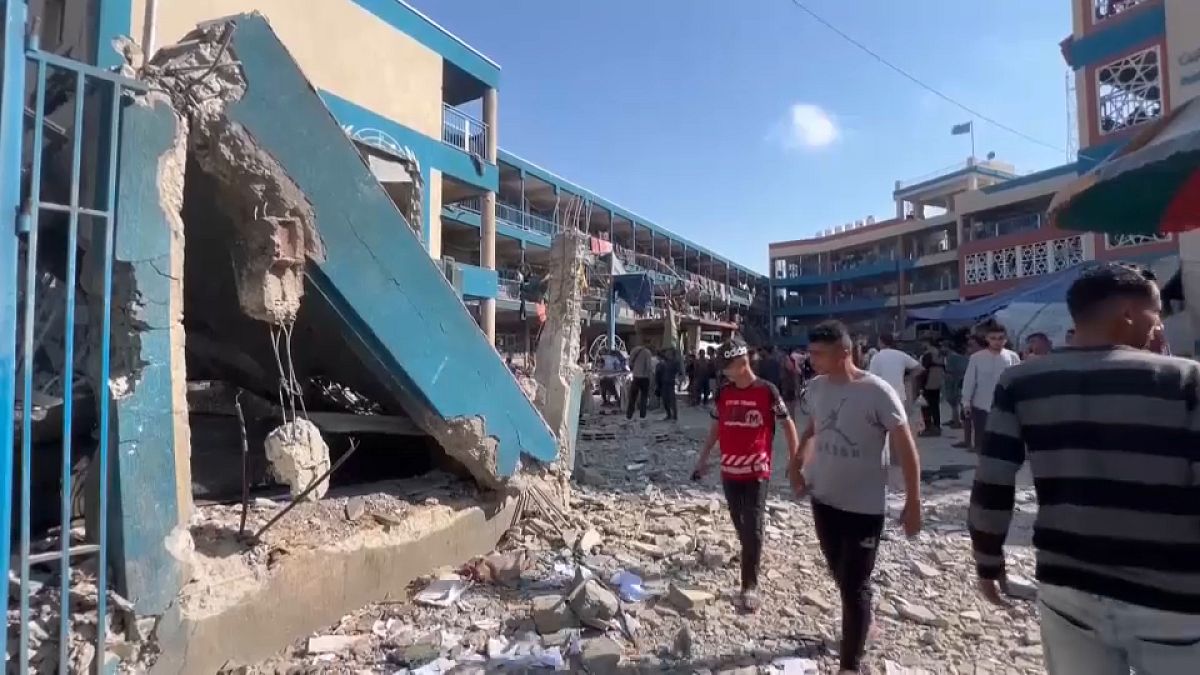Israel’s Defence Minister Yoav Gallant recently visited troops at the Nevatim airbase, praising them for their efforts in wearing down Hamas and stating that the pursuit of the group will continue for years. This comes amidst ongoing violence in Gaza, with at least 14 people killed and dozens injured in an Israeli strike on the Abu Ariban School, which was being used as a shelter for displaced individuals. The school, operated by the UN’s Palestinian refugee agency UNRWA, was targeted despite serving as a place of safety for those trying to escape the conflict.
The situation in Gaza remains dire, with over 80% of the territory’s 2.3 million people displaced by the fighting. Many are living in squalid, makeshift tent camps with limited access to food, clean water, and sanitation products. Charities in northern Gaza have set up soup kitchens to try to feed the population as aid continues to come in slowly and supplies become scarce. International experts warn that hundreds of thousands of people across Gaza are on the brink of famine, highlighting the urgent need for humanitarian assistance in the region.
The recent Israeli strike on the Abu Ariban School is just one example of the ongoing violence that has plagued Gaza for nine months. The conflict was sparked by Hamas’ incursion into southern Israel, resulting in the deaths of around 1,200 people, mostly civilians, and the taking of over 200 hostages. In response, Israel has carried out numerous airstrikes targeting Hamas militants and infrastructure. Despite claims of progress in wearing down the group, Defence Minister Gallant emphasized that the pursuit of Hamas will continue for years to come.
The targeting of schools and other civilian infrastructure in Gaza has drawn condemnation from human rights groups and the international community, who have called for an immediate ceasefire to prevent further civilian casualties. The UNRWA has condemned the attack on the Abu Ariban School, stating that it violated international law and put the lives of innocent civilians at risk. The situation in Gaza remains volatile, with no end in sight to the conflict, as both sides continue to engage in violence with devastating consequences for the civilian population.
As the conflict in Gaza continues, the humanitarian situation becomes increasingly dire, with a growing number of people facing the threat of famine and lack of basic necessities. The ongoing violence has forced hundreds of thousands of people to flee their homes, with many living in overcrowded and unsanitary conditions. International aid organizations are working to provide assistance to those in need, but their efforts are hindered by the ongoing violence and restricted access to the region. The international community must step up its efforts to bring about a peaceful resolution to the conflict and provide much-needed humanitarian aid to the people of Gaza.
In conclusion, the situation in Gaza remains volatile and the humanitarian crisis continues to worsen as the conflict between Israel and Hamas shows no signs of abating. The targeting of civilian infrastructure, such as schools and hospitals, has resulted in significant loss of life and displacement of the civilian population. Humanitarian organizations are working tirelessly to provide assistance to those in need, but their efforts are hampered by ongoing violence and limited access to the region. The international community must do more to put an end to the violence and provide the necessary support to the people of Gaza who are suffering as a result of the conflict.
















